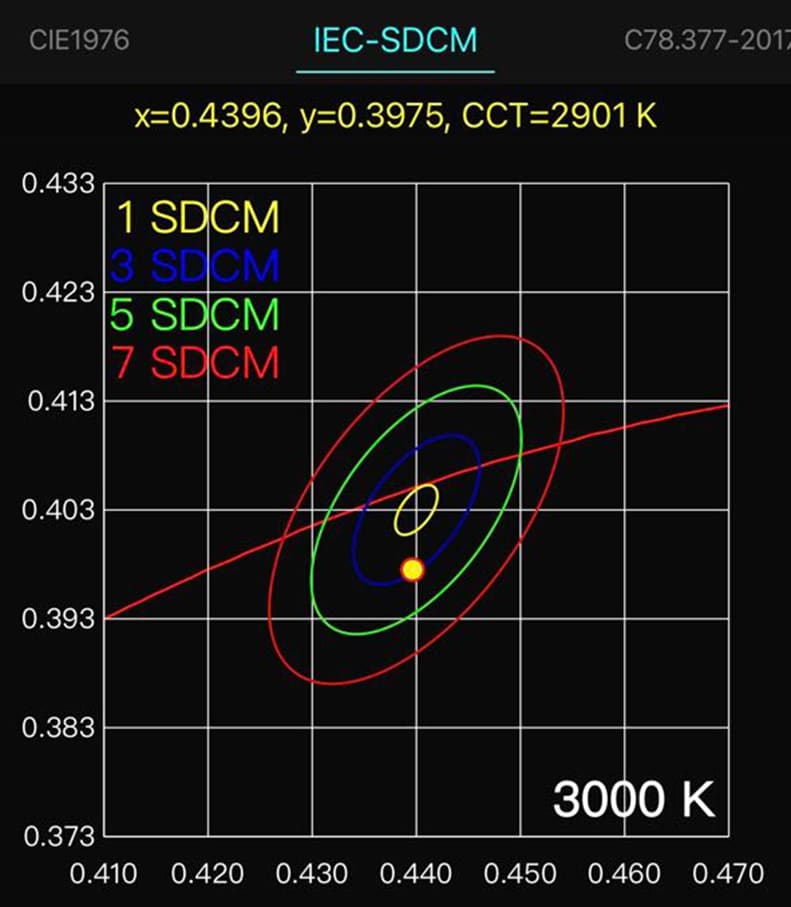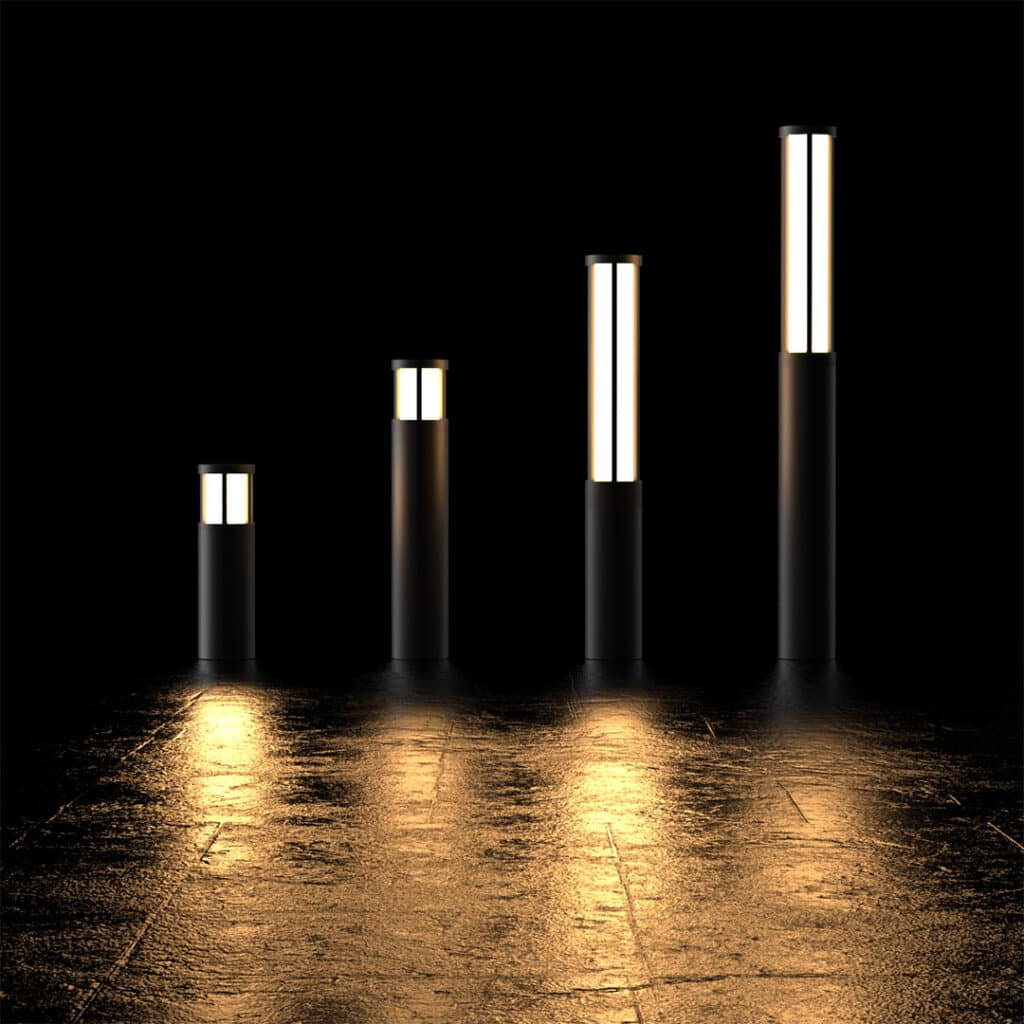We’re ending the year by publishing a new technical post where, this time, we’ll be discussing the concept of SDCM (Standard Deviation Colour Matching). As is usual with many concepts related to LED technology in lighting, it’s often interpreted differently to its definition, or sometimes not interpreted at all; instead, it’s used to request characteristics for LED luminaires that differ to the real needs seen in installations.
Although this post won’t be going into theoretical physics concepts, we would like to say that the concept of SDCM is based on the Macadam ellipse concept, which was developed in the 1940s by David Lewis MacAdam, an American physicist and colour scientist (as well as an expert in other subjects related to light and colour), and it allows us to analyse the colour consistency of LED light sources.
Based on the variation of the coordinates within a MacAdam ellipse, the SDCM value allows us to determine the proximity between two different colours based on the steps of separation between them. In other words, the lower the SDCM value, the fewer the MacAdam ellipse steps between the colours of two lights sources and, therefore, the smaller the difference in colour perceived by the naked eye.

Example of MacAdam ellipse in 3000 K for light source with SDCM ≤ 3.
Values below 6 MacAdam ellipse steps are acceptable according to Commission Regulation (EU) 2019/2022 , of 1 October 2019, laying down ecodesign requirements for light sources and independent control mechanisms pursuant to Directive 2009/125/EC of the European Parliament and of the Council.
How does all of the above translate into practice?
- – Values between 2 and 5 would be suitable for use.
- – Vales between 2 and 3 are optimal values for better colour consistency and a smaller variation in it.
- – Values of 1 are usually experimental values that are difficult to achieve for luminaires.
In addition, we must take into account that regardless of a luminaire’s SDCM, since the MacAdam steps come from values that fall in elliptical areas, values of 2 or 3 can even give variations similar to a value of 5, according to the samples analysed found in certain positions and others within the ellipse. This means, in any case, the SDCM value is a piece of information that should be considered but not viewed as a standalone constraint when choosing to select a luminaire (or not) since aspects like the colour rendering index (CRI), binning, diffuser materials, etc. could have a greater or lesser impact on the colour variation of the lighting emitted by an LED luminaire.
If you have any questions or require more information, we recommend you contact us.


